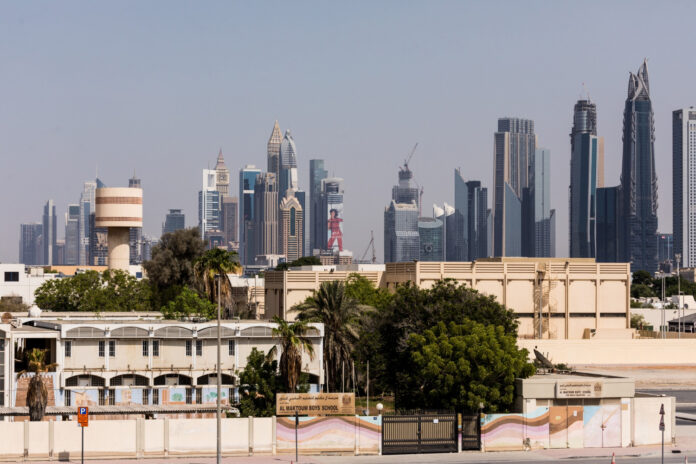Strategic initiatives under Vision 2040 drive Oman’s non-oil sector to record growth, with foreign investment reaching new heights in 2024
The non-oil economic growth of Oman surged by 4.2% in the first half of 2024, reflecting the success of the country’s diversification efforts under the 10th Five-Year Plan (2021-2025) and Vision 2040. These initiatives aim to reduce reliance on oil revenues and establish a more sustainable economic foundation.
Nasser Al-Mawali, undersecretary at the Ministry of Economy, emphasised that this growth reflects the government’s strategic focus on economic diversification. Speaking to the state-run Oman News Agency, Al-Mawali highlighted that nearly 90% of the initiatives laid out in the current plan have been implemented. These efforts have been pivotal in boosting non-oil activities, particularly in sectors such as green hydrogen, logistics, pharmaceuticals, and fisheries.
The non-oil sector’s contribution to Oman’s GDP has grown significantly, reaching approximately 13.5 billion Omani rials (around $35.1 billion) by mid-2024. This marks an increase from 13 billion rials in the same period last year, showcasing the sector’s expanding influence on the national economy. It now accounts for an impressive 72.2% of Oman’s GDP at constant prices, further indicating that the country is on track to achieve its Vision 2040 goals.
Foreign direct investment (FDI) has also seen a substantial surge, with total investments reaching nearly 26 billion rials by mid-2024. This is a dramatic rise from 17.8 billion rials at the close of 2021. The influx of foreign capital underlines the confidence of global investors in Oman’s economic stability and the effectiveness of its diversification strategy. The government’s focus on creating a business-friendly environment has evidently paid off, with key projects like the Duqm Refinery playing a significant role in attracting overseas investment.
The Duqm Refinery, inaugurated earlier this year, is poised to be a game-changer for Oman’s industrial sector. It not only strengthens the country’s manufacturing capabilities but also enhances its export potential. This state-of-the-art facility is expected to drive industrial growth, with spillover effects benefitting adjacent sectors. Additionally, the ongoing development of the integrated economic zone in Al-Dhahirah, in collaboration with Saudi Arabia, aims to further expand Oman’s industrial footprint and bolster its logistics capabilities.
Embed from Getty ImagesHowever, while the non-oil sector flourished, the oil industry faced some challenges. The oil sector experienced a slight contraction, shrinking by 2.5% during the first half of 2024. This decline is mainly attributed to a 4% drop in crude oil production. Despite this, the natural gas segment provided a much-needed boost, growing by 6.6%. Al-Mawali stressed that the steady rise in non-oil activities is cushioning the economy against the inherent volatility of global oil markets, which have been highly unpredictable in recent years.
The country’s overall GDP saw moderate growth, expanding by 1.9% in the first half of the year. At constant prices, Oman’s GDP increased from 18.4 billion rials to 18.7 billion rials, while at current prices, it rose to nearly 21 billion rials from the previous 20.4 billion. The steady climb in GDP figures reflects Oman’s success in stabilising its economy, even as global financial markets continue to grapple with uncertainties.
Under Vision 2040, Oman aims for an average annual GDP growth rate of 5%. Notably, the country has achieved a growth rate of around 4.5% during the first three years of the 10th Five-Year Plan, signalling strong progress. This performance highlights the focus of Oman on boosting non-oil economic growth and increasing the sector’s contribution to GDP.
The banking sector also played a vital role in supporting the economy during this period. The sector recorded positive growth, with total credit disbursed by banks increasing by 5%, reaching 32 billion rials by September 2024. Of this, credit extended to the private sector alone amounted to 26.7 billion rials, marking a 4.2% increase. A significant portion of this credit went to non-financial corporations, which received 45.2%, closely followed by individual borrowers at 45%.
Total deposits in Oman’s banking sector also saw healthy growth, increasing by 13.7% to 31.6 billion rials as of September. Private sector deposits rose by 12.7%, amounting to 20.7 billion rials. The breakdown of these deposits indicates that individuals held the largest share, accounting for over 50%, while non-financial corporations held 29.5%.
The government’s proactive approach to fostering economic growth, especially in the non-oil sector, has already begun to pay dividends. Oman’s Vision 2040, which aims to increase the non-oil sector’s share of GDP to 90% by 2040, is on a promising trajectory. With continued investment in key industries and infrastructure, Oman is steadily moving towards a future where it will no longer be solely dependent on its oil resources.
The strategic focus of Oman on sustainability, economic resilience, and diversification is driving positive outcomes, with non-oil economic growth playing a key role in the nation’s steady progress. As the government continues to implement its economic policies, Oman is well-positioned to tackle regional and global economic challenges with renewed strength.
